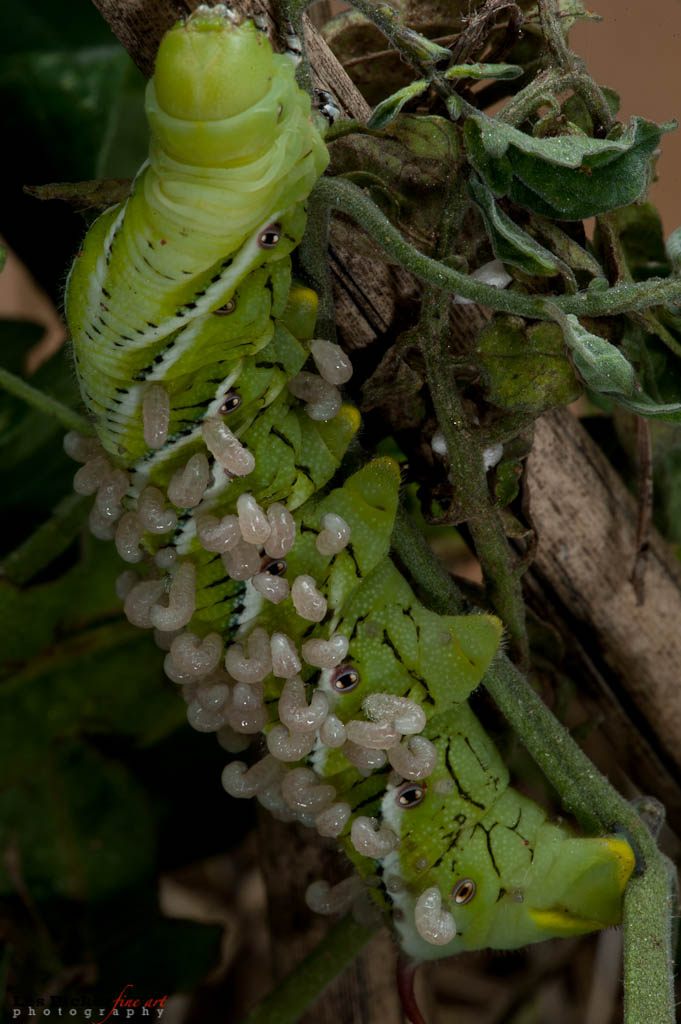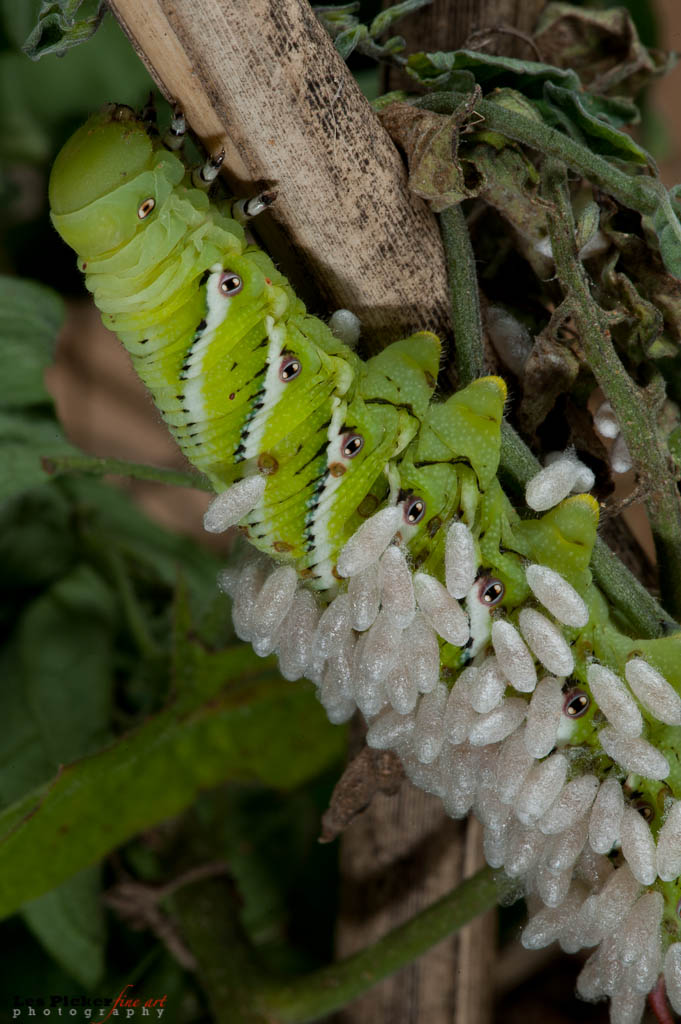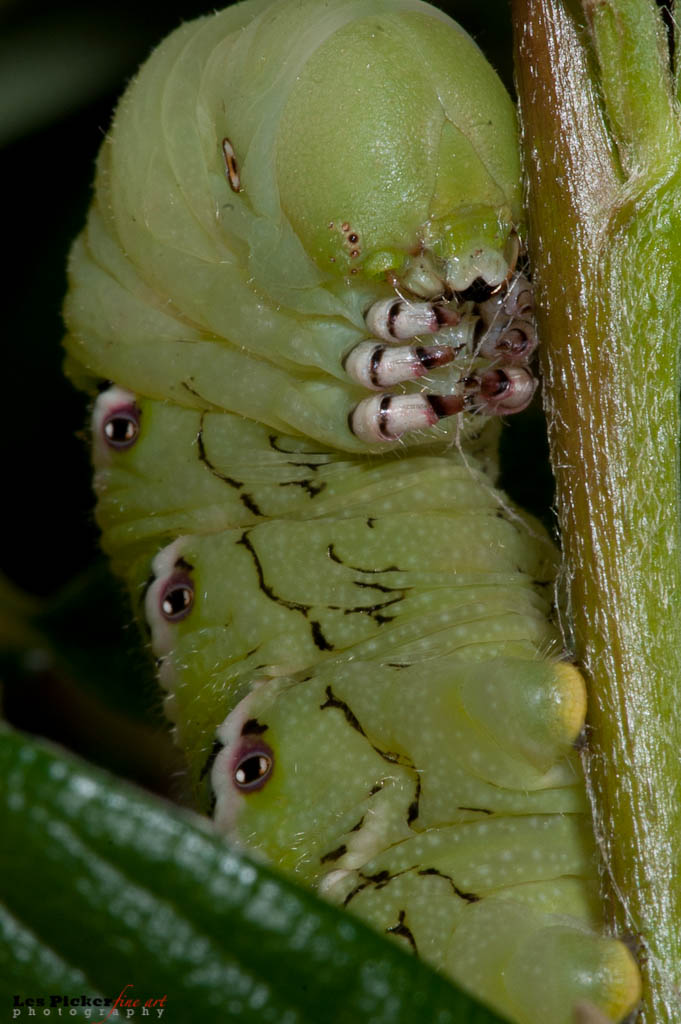
Of Hornworms and Other Strange Pursuits
Boredom is good! The interstitial seasonitis doldrums have started, that dreadful time for photographers where we are still blinded by Fall’s colors and the snows of winter have yet to fly. Oh, the boredom, the insatiable itchy trigger finger!
Well, you can relieve that boredom with Les Picker’s tried-and-true doldrums destroyer. It’s called an aquarium. Not just any aquarium, but a dry aquarium, aka a terrarium. Here’s what I mean.
Buy a used aquarium (5-10 gallons should suffice) at a yard sale. If one side or other is cracked, so much the better; it’ll cost you less. Go home and clean the glass sides thoroughly… and I mean thoroughly, so that not a speck of dirt or a smudge remains.
Now, carefully fill it with earth, clumps of grass, dried weeds, for whatever scene you’d like to create. Put a fine mesh cover on top of the terrarium. Stick your camera on a tripod right next to a glass side. Add a macro lens or some inexpensive extension rings. Now, add some creepy-crawly things and, voila!, you have a made-to-order boredom reliever.
[Warning: bringing cold or frozen soil from outside into your warm house will probably cause lots of little critters to hatch and emerge. Hey, that’s good. You’ll never know what new photographic subjects will suddenly be crawling in your aquarium.]
Case in point: last year my wife’s tomato plants were bugged by bugs. Not your garden variety (pardon the puns). These bugs were huge. They are called Tomato Hornworms and, while colorful… in fact gorgeous… I hate competition for my wife’s prized tomatoes. These “worms” metamorphose into the spectacular caterpillars you see here.
So, I picked off a few and plunked them into my terrarium. I started to photograph them. Lots of fun. Then, to my amazement, something extraordinary began to happen right before my eyes. While photographing one afternoon, I saw something live emerging from the skin of the worm! Soon, other wiggly things began to emerge. Within hours the poor Hornworm was covered with these translucent worms.

Within minutes of emerging, these tiny creatures spun a cocoon around themselves, all the while attached to the Hornworm. After two weeks of enduring what must be a painful demise, the Hornworm caterpillar died and the cocoons dropped off into the soil.

What I learned after some research is that the tiny wigglies are the larvae of a miniature and harmless (to humans, that is) wasp. On a nice summer’s day the wasp lands on the Hornworm caterpillar and injects its eggs under its victim’s skin, along with a virus that is thought to delay the maturation of the eggs into the larvae (so as to give the caterpillar a chance to fatten up). Over the next few weeks the eggs transform into a larva. At the end of the season the larvae emerge, take sustenance from the caterpillar’s body, form cocoons that drop into the soil, go through another metamorphosis into wasps and emerge again in the spring. Is that neat, or what? I’d never have learned about this parasitic lifecycle if not for boredom.

So, what will you do with your photo doldrums this year? Complain? Whine? Be short-tempered with your wife and kids? Not any more. Boredom is good!